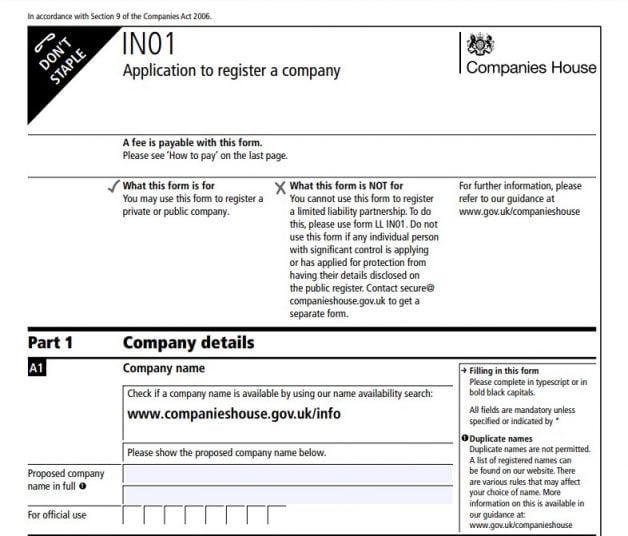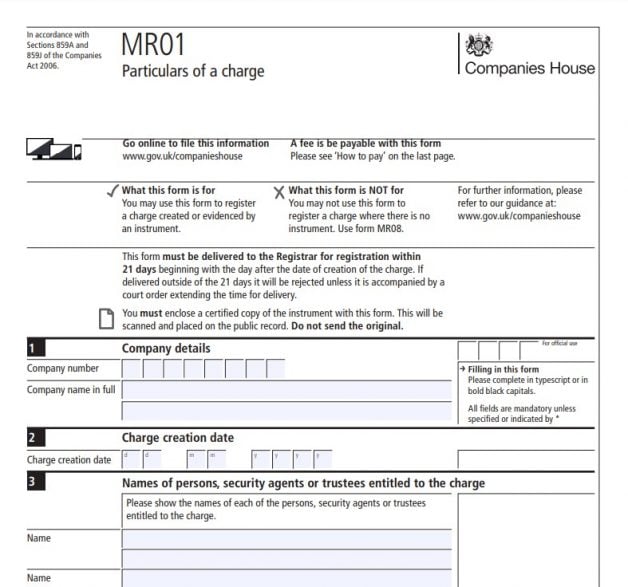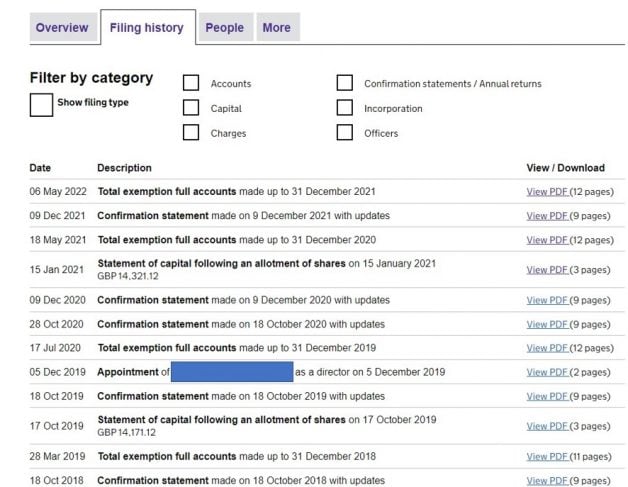Have you considered the features of a limited company?
If you're comparing business structures, you should also be aware of the advantages that a limited company can provide.
What is Companies House?
Companies House is the United Kingdom’s registrar of companies. It incorporates and dissolves limited companies, registers company information, and makes this information available to the public. It holds records for millions of companies, with hundreds of thousands of new ones added each year.
Why does Companies House exist?
It exists to promote corporate transparency by making registered companies’ internal workings available for anyone to inspect in a public register. The who, what, when and where of companies are all easily accessible for free. This gives company officers an incentive to act in good faith since they know that their corporate actions are a matter of public record.
A better way to file your records with Companies House
• Faster and easier filing with Inform Direct
• Keep company records up to date
• Comprehensive software that handles e.g. complex share splits
• Smart wizards ask for only the data needed
• Auto-generate forms
• Save time
The public register enables people to check up on companies. Anyone can use it to:
- look at the company’s financial position and ownership structure
- confirm that the people who claim to represent the company are formally appointed
- ensure that filings are up to date
- satisfy themselves that other matters of governance are properly attended to and have credibility.
What does Companies House do?
Companies House has three functions:
- Incorporate and dissolve limited companies
- Examine and store the information on limited companies that is required by law
- Make this information available to the public.
We will take a look at each of these functions in turn.
Incorporate and dissolve
Every new limited company comes into being by registering at Companies House in a process known as incorporation. Once incorporated, a company must keep its records up to date by regularly filing its details and accounts. There are penalties for failing to do so on time.
The main documents Companies House requires in order to incorporate a limited company are:
- Form IN01 (application to register a company) plus the fee
- Memorandum of association
- Articles of association (if none are submitted then the model articles of association will apply automatically).
There is more detail in our article about incorporation documents.
Upon receipt of these, the Registrar’s office will perform a number of checks. These include checking that none of the proposed company directors is currently disqualified, bankrupt or under 16 years old. When all checks are passed Companies House will incorporate the company, issue it with a unique company registration number and a certificate of incorporation, and put its details onto the public register. The company is now a legal entity and can sail the high seas of commerce confident in the knowledge that it does so with the blessing of Her Majesty’s Government.
Once incorporated, each limited company must keep its records up to date by regularly filing its details and accounts with Companies House.
When a company has reached the end of its useful life and is free of debt, it can be dissolved or ‘struck off the register’. This is done via form DS01 following a process of checks to ensure that employees have been paid, assets sold, bank accounts closed and all debts settled. Companies House will check the form is filled in correctly and then publish a notice in The Gazette, a publication that exists for the purpose of such statutory announcements. If nobody has objected to the dissolution, a second notice will be placed in The Gazette after two months and the company will thereby cease to exist.
Examine and store
Companies House checks companies’ details and makes them available for the public to examine at any time. Details on the public record include:
- Registered address
- Nature of business
- Names of directors
- Names of PSCs (Persons with Significant Control)
- Name of company secretary, if one is appointed
- Status (active, dissolved, in receivership, struck off, etc)
- Names and holdings of shareholders, also known as ‘members’
- Share structure (share classes, share capital, dividends etc.)
- Loans and mortgages held by the company.
Changes to any of the above must be notified to Companies House promptly so that it can update the public record. Companies are legally required to provide these details.
In a very small number of instances, certain information that must be provided to Companies House is withheld from the public record, such as the residential addresses of the directors. This is generally for legal and personal safety reasons.
Companies House has traditionally been at pains to point out that it does not claim to verify the accuracy of the information it holds on UK limited companies. It has always performed basic checks on documents it receives to ensure they are correctly completed and signed and done much to enforce compliance with Companies Acts. But it has had no power to officially verify, validate or confirm the accuracy of the information it is given.
This is changing. After a consultation in 2019-20, the government has resolved to develop a policy on new querying powers for the Registrar which will enable Companies House to question information before it is filed. The Economic Crime and Corporate Transparency Act 2023 has given Companies House extended powers to query and reject information. The registrar will become less of a passive recipient of company information and more of an active gatekeeper.
Every limited company must submit a yearly update called a confirmation statement. It keeps a fresh trail of a company’s records by a) confirming what has not changed and b) declaring what has. The confirmation statement replaced the annual return in 2016.
Make information available to the public
Most UK businesspeople know where to look for basic information on a limited company. They go to the Companies House search page known as ‘Companies House Beta‘ and type in a company name. This returns the following data:
- Registered address
- Type (private limited company, limited liability partnership (LLP) etc.)
- Nature of business (SIC code)
- Date of incorporation
- When the next confirmation statement is due
- When the next accounts are due
- Any previous company names
- Particulars of people (directors, company secretary and PSCs)
- Any charges the company has (mortgages, etc.)
- Filing history: accounts, confirmation statements, changes of details, and other filings the company has made
The above is all downloadable as PDFs and iXBRL files (iXBRL is an accounting reporting standard). By creating a free account, anybody can download a company snapshot (a report consisting of the above information about the company), a signed certificate of incorporation and a certified copy of any document from a company’s filing history. These can be required for various reasons, but often it is to prove a company’s good standing.
One of the most frequent searches of the Companies House database is a director search. People want to find out the identities of those running a company, or conversely to see which companies somebody is a director of. This is easily done by searching Companies House online.
Ways to file information with Companies House
Most interactions with Companies House now take place over the internet. Paper filing is still possible, but you will be charged much higher administrative fees for it than for electronic filing. Regular filings such as confirmation statements are necessary. Electronic filing, particularly using software like Inform Direct, has clear benefits: instant confirmation of receipt of submissions, lower filing fees, shorter waits for acceptance, fewer rejections and fewer late filing penalties.
Software filing
Software Filing is a service that allows certain documents to be filed at Companies House via third party software.
Inform Direct is an example of third party filing software. It is a Companies House authorised provider. When preparing submissions to Companies House, Inform Direct will prompt you for the necessary details, generate the forms and submit them directly.
Inform Direct is designed from the ground up to make this process as fast and simple as possible. It has a carefully researched set of user-friendly features to make company secretarial tasks easier and faster. See Inform Direct’s features here.
Electronic filing, particularly using software like Inform Direct, has clear benefits: instant confirmation of receipt of submissions, lower filing fees, shorter waits for acceptance, fewer rejections and fewer late filing penalties.
Paper filing
Certain communications with Companies House can only be made on paper, such as reductions of share capital and requests to have addresses hidden from public inspection. Inform Direct prompts you for the information needed to fill in these forms and generates them in a printable format for sending to Companies House’s postal address.
Where possible, electronic filing and communications are the norm. This includes the vast majority of standard filings that limited companies need to make. Online filing makes even more sense considering that the paper versions of some forms stretch to dozens of pages.
Paper filing is still possible, but Companies House charges much higher administrative fees for it than for web filing.
The Protected Online Filing (PROOF) scheme is an optional and free service designed to reduce fraudulent changes to company details. It blocks the filing of certain paper forms which fraudsters can use to change the registered office address, appoint or remove officers, change officers’ particulars or change a company’s name.
Webfiling
Companies House has an interface called WebFiling that companies can use to add and update their records. It is part of the official gov.uk site. Both free and paid-for documents can be submitted. For example, it costs £13 to file a confirmation statement, but there is no charge for changing a company’s registered office address. Certain companies cannot use WebFiling, for example those with over 1,000 shareholders or complex share structures.
Most submissions are made on standard forms. Some of the more common Companies House forms are listed below. This is by no means exhaustive. A complete list for limited companies can be found here: Companies House forms for limited companies.
Start saving time and money by filing with Companies House at the touch of a button. Inform Direct: brilliant company secretarial software.




